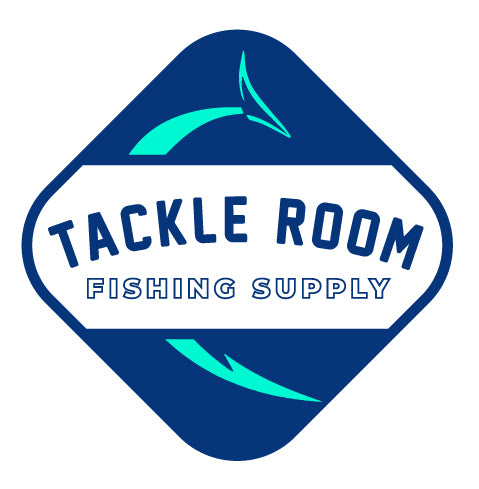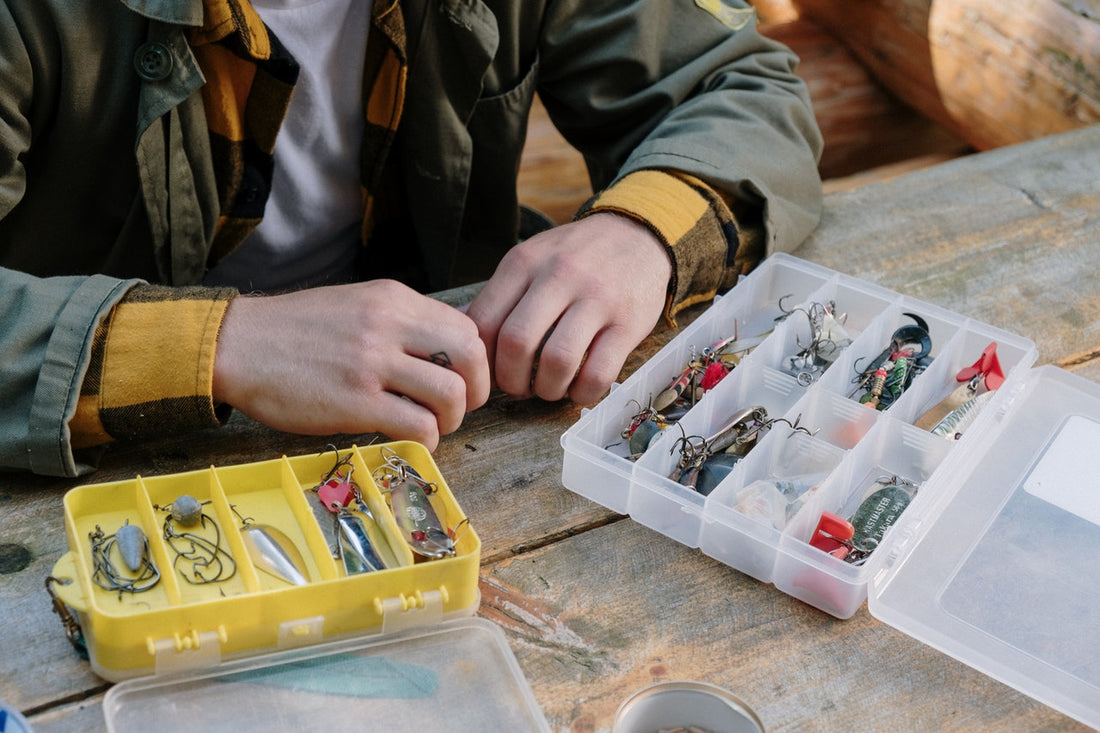Fishing Hook Size Chart
We know there are tons of different saltwater fishing hook sizes to choose from. Let us help you get to the “point” of hook selection with some solid info regarding fishing hooks. We are your direct tackle supply and work hard to provide you with quality information to fulfil your needs.
| Epic Fishing Titanium Jaw Pliers |
|

|
 |
The thing is, hook sizes vary from manufacturer to manufacturer, even the most experienced anglers need a hand picking out proper hooks, from time to time.
However, it’s critical to ensure that you’ve got the right hook for your application – too big and it can interfere with the action of your bait or be difficult for a fish to bite, too small and it can become engulfed all too deep – creating a difficult situation for catch and release fisheries. Right now, let’s focus on the key elements of fishing hook selection.
Fishing Hook Sizes
Fishing hook sizes can be difficult to follow. I’ve personally struggled with this for as long as I can remember.
The thing is, you’ve got “ought” sizes, and whole numbers – which one is bigger?
Typically, your larger hooks are going to be the “ought” sizes – these will look like this (x/0), with the larger front number indicating a larger hook size. When we discuss hook sizes in terms of whole numbers, the hook actually becomes larger with the smaller number.

Example: a number 1 hook would be larger than a number 3 hook, assuming the same model and style.
It’s important for you to remember that this logic applies to traditional J hooks, circle hooks, and treble hooks. These are the most common styles of fishing hook that you’ll encounter.
| Sufix Fishing Monofilament Fishing Line |
Diamond Braid Hollow Core |
Fishing Hook Parts
Much like the very fish you’re targeting; hooks have an “anatomy” so to speak. Saltwater fishing hooks can be broken down into a handful of basic components.

First, the “ring” or “eye” – this is where you’ll attach your line, it’s basically a round hole at the end of the hook. Some specialty hooks for jigging don’t have eyes, but you would make several wraps around a flattened portion to secure the hook to your assist cord.
It’s also important to note that there are many different styles of eye – this can get a touch overwhelming, so we will break it down a bit below.
- Ring eye – this is a round opening at the end of a hook, think about the traditional fishing hook shape you’re used to.
- Ring eyes can be open, or welded shut, depending on the intended application of the hook
- Needle eye – this is a hook eye that is more of a slit than a hole. This hook eye style is primarily used with wire and cable leader. It also makes for a smaller profile.
- Open eye – this style of eye is for attaching to another hook. Some anglers like to use dual hooks inline with one another – this is particularly common with pre-rigged ballyhoo.
The next part you’ll see as we continue down the hook is the shank or body – this is the long part that connects the eye to the bend. Fishing hook shanks can be straight (inline) or bent (offset) depending upon application.
Following the shank, you’ll see the bend – this is what creates the hook gap, which we’ll come to shortly.
The business end is the point, which should be fairly self-explanatory. Hook points can have barbs, which catch on the mouth of a fish as the hook is set, or they can be barbless, for fast release of gamefish.
The last part of the hook is the gap – this is the distance between the tip of the point and the body of the hook.
It’s important to take note of your hook gap as this dimension actually corresponds to hook size when selecting hooks for trolling lures – a good rule of thumb for lure hook selection is to closely match the diameter of your lure head with the gap of the hook.
Setting the Hook
Setting the hook is one of the most fun parts of fishing. This terminology refers to the split second in time when you apply extra tension to your fishing line and secure your fishing hook in the jaw of the fish you’re trying to catch.
We’ve all seen the bass fishing guys on weekends set hooks like they’re trying to jerk a house off of its foundation – while this may not always be the best technique, the visual does a great job of explaining the process.
What about Snelled Hooks? What is a Snelled Hook?
Snelled hooks are fishing hooks with the leader wrapped around the shank. A snelled hook is basically a fishing hook with a nail knot tied around it.
This is done for a couple of different reasons.
First of all, snelled hooks have a better hook up ratio as they pull the point directly into the mouth of the fish.
Second, this knot is very strong.
Also, a snell knot allows you to tie your leader directly to a baited hook. This comes in handy for targeting many species – from Largemouth Bass to Yellowfin Tuna.
Snelled hooks are very versatile and can be used for just about any style of fishing in one way or another.
Fishing with Bait: Circle Hooks vs. J Hooks
J Hooks have been around since well…the invention of fishing hooks. However, circle hooks have recently made a big splash with anglers.
It seems folks like circle hooks because they tend to find the corner of a fish’s mouth when hooked, they are also difficult for fish to swallow, making for an easier release.
Some people find them easier to fish as well, because you don’t really “set the hook” with a circle hook, you just keep tension on your line as the fish lifts up your bait and swims away.
That said, J hooks have their place for sure. Anglers using trolling lures will find greater success with a J hook than a circle hook.
You’ll also find J hooks on most jigs and Sabiki rigs. When fishing with dead bait, even with most live bait applications, a circle hook is the preferred hook style. In fact, circle hooks are mandated in certain areas based on area fished or target species.
The Most Common Saltwater Fishing Hooks and Their Uses
Circle Hook: Primarily used for bottom fishing and live bait fishing
J Hook: Traditional J shaped fishing hook
Treble Hook: Popular for many casting lure applications, jigs, and as a trailer on some dead bait rigs – a hook with three barbs
Kahle Hook: Style that is more of a cross between a J hook and a circle hook – often used for live bait
Fang Hook: Hook with two barbs, often used on artificial trolling lures – not as common as they once were
Assist Hook: Typically found on jigs – usually rigged on strong cord material
Aberdeen Hook: J hook, typically used for dead bait fishing
Octopus Hook: Hook with a short shank and round bend, but not quite as round as that of a circle hook. Usually used for dead bait fishing
Hook Costs
What makes fishing hooks so expensive!?!?
Well…just like everything else these days, material costs are driving prices through the roof. Higher quality materials like stainless steel are expensive to manufacture and contribute to rising hook costs.
Other processes like sharpening, welding of eyes, and various coatings also drive costs up. However, as with most other items, you get what you pay for. It’s also important to watch for hook package quantities.
This can get tricky, with some brands changing the pack quantity by hook size and others sticking with a standard count. No matter what style of hook you’re using, or where it comes from, it’s important to take a look at how many uses you’ll expect to get from the hook, and the conditions you’ll be using the hook in, prior to making a purchase.
Sometimes, cheap hooks get expensive fast, especially when big fish are lost.
Fishing Hook FAQs:
✦How do you determine hook size?
Choose your hook based on either your lure size (when fishing with an artificial trolling lure) or the mouth size of your target species (when fishing with dead bait or artificial bait)
✦ What size hook is bigger an 8 or a 10?
That number 8 is bigger, but don’t get too confused, an 8/0 is even bigger than both of them.
✦ Can saltwater fishing hooks be reused?
Absolutely – unlike other saltwater terminal tackle like wire rigs, you can easily reuse hooks. Just rinse them off at the end of your trip as you would your other gear, pat dry, and store them for your next trip.
✦ Are fishing hooks allowed on planes?
Short answer, yes. Long answer, only in your checked luggage. As with anything sharp, fishing hooks must be stowed out of reach while traveling.
✦ Are fishing hooks biodegradable?
Short answer, yes. In time, even stainless hooks will rust out. However, carbon steel hooks deteriorate a lot faster than stainless steel fishing hooks do.
✦ Do red hooks catch more fish?
They may catch more fisherman, but it’s unlikely that red hooks catch more fish. As with most matters of color in the fishing world, this is a question of personal preference.
✦ When were fishing hooks invented?
This is an awesome question. Some historians believe fishing hooks were invented over 23,000 years ago.
✦ Are fishing hooks magnetic?
Carbon steel hooks are, yes. Stainless steel fishing hooks are not very magnetic, but will hold some attraction.
Conclusion
As you can gather from this book of text about fishing hooks. There’s a lot to learn. Honestly, we barely scraped the surface in the time we had. Fishing hooks are as varied as lures, if not more so.
If you’ve got other questions about saltwater fishing hooks, we’d welcome a conversation. Please feel free to send us an email or give us a ring at 888.453.3742.





